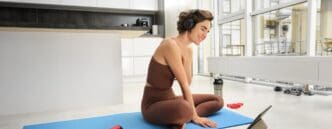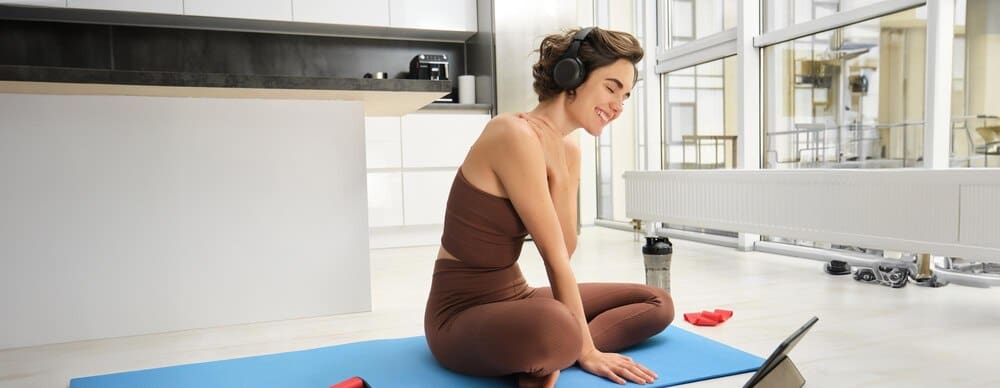The squat is arguably the single most effective exercise for building a strong, functional, and aesthetically pleasing lower body, making it a non-negotiable staple for anyone, anywhere, aiming to enhance their physique and overall wellness. Whether you’re a seasoned athlete in a Miami gym or a beginner starting a home workout routine, mastering this fundamental movement is crucial for developing powerful glutes, toned legs, and a resilient core. The key to unlocking these benefits lies in perfecting your form, a process that involves understanding the mechanics of the movement, bracing your core correctly, and consciously avoiding common mistakes like knee collapse and an arched back, which can not only stall progress but also lead to significant injury.
The Unrivaled Benefits of a Perfect Squat
Often hailed as the “king of all exercises,” the squat’s reputation is well-deserved. Its benefits extend far beyond just building leg muscles, impacting everything from your metabolism to your daily functional capacity.
When you perform a squat, you engage a massive amount of muscle tissue simultaneously. The primary movers are the quadriceps, hamstrings, and gluteus maximus, but the movement also heavily recruits supporting muscles like the adductors (inner thighs), calves, and the entire core musculature, including your abdominals and lower back erectors.
Building Functional Strength for Everyday Life
At its core, the squat is a fundamental human movement pattern. You perform variations of it dozens of times a day without even thinking about it: sitting down in a chair, getting out of your car, or picking up a heavy box from the floor.
By strengthening the muscles involved in these actions, you make everyday life easier and safer. A strong squat translates directly to a reduced risk of injury, particularly to the lower back and knees, as your body becomes more capable of handling physical stress with proper mechanics.
Enhancing Core Stability and Posture
A perfect squat is as much a core exercise as it is a leg exercise. To maintain an upright torso and a neutral spine under load, your core must work overtime to stabilize your trunk. This involves creating intra-abdominal pressure by bracing your abs, obliques, and lower back.
This enhanced core stability carries over to nearly every other physical activity, improving your posture and protecting your spine. A strong, braced core is the foundation of all powerful and safe movement, and the squat is one of the best ways to build it.
Boosting Metabolism and Hormonal Response
Because squats recruit so many large muscle groups at once, they are incredibly demanding from a metabolic standpoint. This high demand requires a significant amount of energy, leading to a greater calorie burn both during and after your workout—a phenomenon known as excess post-exercise oxygen consumption (EPOC).
Furthermore, compound exercises like the squat have been shown to stimulate a potent anabolic hormonal response. They encourage the body to release growth hormone and testosterone, which are critical for muscle repair, recovery, and growth, benefiting your entire body, not just your legs.
Mastering the Movement: Your Squat Checklist
Executing a flawless squat requires focus and attention to detail. Think of it not as a single action, but as a sequence of controlled steps. Following this checklist will help you build a solid foundation for safe and effective squatting.
The Setup: Stance and Foot Position
Your foundation begins with your feet. Place them approximately shoulder-width apart, or slightly wider, depending on your individual hip anatomy and comfort. Point your toes slightly outward, generally between 5 and 15 degrees.
This slight outward turn helps to open up your hips, allowing for greater depth and making it easier to track your knees over your feet during the movement. Your goal is to create a stable, tripod-like base with your weight evenly distributed across your big toe, little toe, and heel.
The Descent: “Sit Back, Not Down”
Initiate the squat by breaking at the hips first, not the knees. Imagine you are about to sit back into a chair that is slightly too far behind you. This “hip hinge” is the most critical part of the descent, as it properly loads your powerful posterior chain—your glutes and hamstrings.
As your hips move back, your knees will naturally begin to bend. Focus on maintaining control throughout the entire downward phase. Do not simply drop into the bottom position; guide your body down with muscular control.
Core Engagement: Bracing for Impact
Before you begin the descent, take a deep breath into your belly—not your chest—and brace your core as if you are about to be punched in the stomach. This technique, known as the Valsalva maneuver for heavy lifting, creates intra-abdominal pressure.
This pressure acts like a natural weightlifting belt, stabilizing your spine and creating a rigid, solid trunk. You should maintain this brace throughout the entire repetition, only exhaling as you pass the most difficult point of the ascent.
Achieving Depth: Breaking Parallel
For full muscle activation, particularly in the glutes, the goal is to squat to a depth where your hip crease drops below the top of your knee. This is known as “breaking parallel.” However, you should only squat as deep as your mobility allows while maintaining a neutral spine.
Forcing depth you don’t have can lead to form breakdown, such as lower back rounding. If you struggle with depth, focus on improving your hip and ankle mobility over time rather than compromising your form.
The Ascent: Driving Through the Floor
Once you hit the bottom of your squat, drive upward powerfully and with purpose. Imagine you are trying to push the floor away from you. This force should be driven through your mid-foot, not your toes or heels.
A common mistake is to let the chest fall forward and the hips rise faster than the shoulders. To avoid this, focus on driving your upper back into the bar (if using one) and keeping your chest proud. Your hips and shoulders should rise at the same rate.
Identifying and Correcting Common Form Flaws
Even with the best intentions, form can break down. Identifying these common mistakes in your own squat is the first step toward correcting them and building a stronger, safer lift.
Mistake 1: Knees Caving In (Valgus Collapse)
The Problem: As you squat down or stand up, your knees drift inward toward each other. This places significant stress on the ligaments in your knees and is often a sign of weak glute medius muscles (the muscles on the side of your hips) and/or overactive adductor muscles.
The Fix: Actively think about “spreading the floor” with your feet. Another effective cue is to imagine you are trying to show the inside of your shorts to the wall in front of you. Incorporate exercises like banded squats (placing a resistance band just above your knees), clamshells, and glute bridges to strengthen your hip abductors.
Mistake 2: The “Good Morning” Squat
The Problem: During the ascent, your hips shoot up much faster than your shoulders, causing your chest to fall forward. This turns the movement into a “good morning” exercise, placing the load almost entirely on your lower back instead of your legs.
The Fix: This is often a sign of weak quadriceps or a failure to maintain core bracing. Lower the weight significantly and focus on the cue “lead with your chest.” Pause squats, where you hold the bottom position for a few seconds, can help reinforce the correct motor pattern of driving up with the chest and hips together.
Mistake 3: Lifting the Heels
The Problem: Your weight shifts forward onto the balls of your feet, causing your heels to lift off the ground. This creates an unstable base and places undue stress on your knees.
The Fix: This is typically caused by poor ankle mobility or an incorrect initiation of the squat (breaking at the knees instead of the hips). Work on ankle dorsiflexion with drills like wall ankle stretches. During the squat, focus on keeping your weight over your mid-foot and “screwing” your feet into the ground to create stability.
Mistake 4: Rounding the Lower Back (Butt Wink)
The Problem: At the bottom of the squat, your pelvis tucks under, causing your lower back to round. This “butt wink” compromises the neutrality of your lumbar spine, putting it at risk of injury, especially under load.
The Fix: Butt wink can be caused by a number of factors, including tight hamstrings, limited hip mobility, or simply squatting deeper than your current anatomy allows. Film yourself from the side to identify the exact point where your pelvis tucks. Work on squatting to a depth just above this point while you simultaneously focus on mobility drills and core strengthening exercises like planks and dead bugs.
Conclusion: The Foundation of a Stronger You
The squat is more than just an exercise; it’s a foundational pillar of strength, health, and longevity. Perfecting your form is a journey that requires patience, mindfulness, and a commitment to moving well before moving heavy. By understanding the mechanics, internalizing the cues, and diligently correcting common flaws, you are not just building a stronger, more sculpted “Miami body.” You are investing in a more resilient, capable, and functional physique that will serve you for a lifetime.







